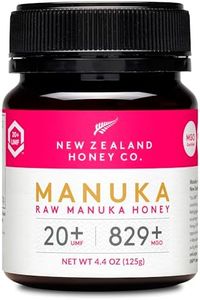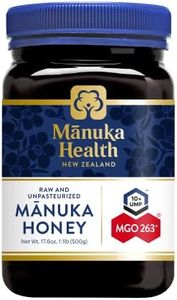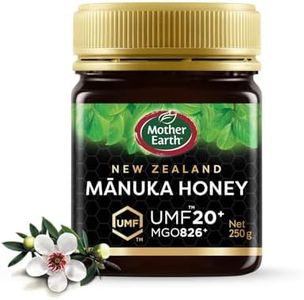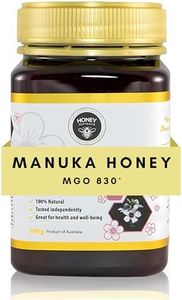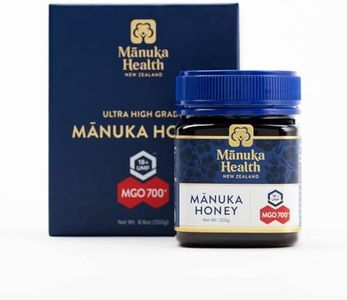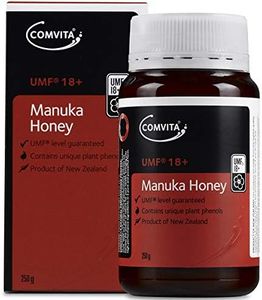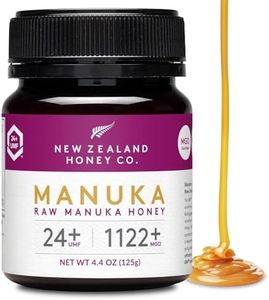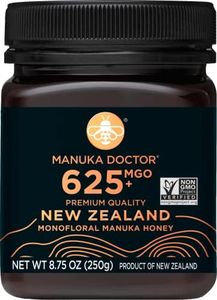We Use CookiesWe use cookies to enhance the security, performance,
functionality and for analytical and promotional activities. By continuing to browse this site you
are agreeing to our privacy policy
10 Best Manuka Honeys
From leading brands and best sellers available on the web.Buying Guide for the Best Manuka Honeys
Manuka honey is a special type of honey produced in New Zealand and Australia from the nectar of the Manuka tree. It's renowned for its unique taste and potential health benefits, including antibacterial properties. When shopping for Manuka honey, it's important to pay attention to certain labels and factors that influence quality and authenticity. Understanding these key specifications will help you choose the honey that's right for your needs, whether you want it for daily use, wellness, or as a natural remedy.MGO RatingMGO stands for methylglyoxal, which is the compound mainly responsible for Manuka honey's antimicrobial qualities. This rating tells you how many milligrams of methylglyoxal are present per kilogram of honey. Lower MGO numbers indicate mild strength, typically suitable for basic sweetening or mild wellness benefits. Higher MGO ratings suggest stronger antibacterial properties, often chosen for targeted health uses. If you're just enjoying it as a sweetener, a low MGO is plenty. For wellness or therapeutic use, look for a higher number, but always think about why you want Manuka honey to decide which level suits you best.
UMF RatingUMF stands for Unique Manuka Factor, which is a special quality trademark and grading system that guarantees the purity and quality of Manuka honey. It measures not just MGO levels but also leptosperin and DHA, ensuring comprehensive quality. UMF ratings usually range from UMF 5+ (low) to UMF 20+ (very high). Lower UMF ratings are good for daily eating or mild benefits. Medium ratings (around UMF 10+) are balanced for both taste and health. High UMF honey is typically more potent and often used for more serious wellness purposes. Your choice should line up with how strong of an effect you are seeking.
Authenticity CertificationAuthenticity certification ensures the honey is genuinely Manuka honey, not a blend or imitation. Trusted certifications, like the UMF Honey Association or government grading, show the honey meets strict standards for purity and origin. Certified honey will always have a label or a mark that confirms it has passed these checks. To be sure you’re getting real Manuka honey, always look for these authenticity marks, especially if you want the full potential health benefits.
Raw vs. ProcessedRaw Manuka honey is honey that has not been heavily filtered or heated, maintaining more of its natural enzymes and nutrients. Processed honey has been pasteurized or filtered to create a smoother texture but may lose some beneficial properties. If you prefer the potential added health benefits and a more natural profile, raw honey is the way to go. However, processed honey might be easier to use as a spread or sweetener, so your need for convenience versus natural benefits should guide your choice.
Taste and TextureManuka honey’s taste ranges from earthy and slightly bitter to sweet and caramel-like, and its texture can be thick or creamy. If you like to eat honey by the spoonful or spread it on toast, pay attention to descriptions or reviews about flavor and consistency. Some people love the intense, herbal taste, while others want something milder. Try to match your preference with product descriptions or try small jars first to find your favorite profile.



